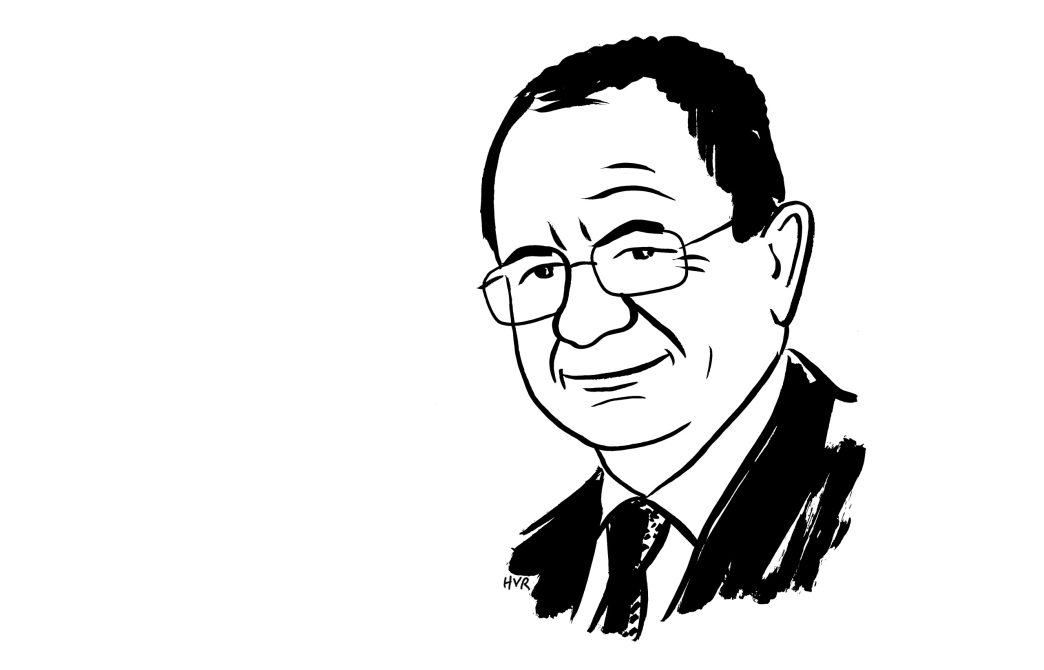Former ambassador, Ednan Agaev held senior positions at the Soviet and then Russian Ministry of Foreign Affairs, as well as at the United Nations. From 1982 to 1994, he led the bilateral negotiations with the Americans on the limitation of nuclear weapons. Now based in Paris, he works as an international affairs consultant.
Since the end of the Cold War, strategic relations between the United States and Russia have relied on a set of agreements aimed at limiting the nuclear arsenals of the two powers and regulating their deployment. Among them, the New START Treaty, signed in 2010, remains the last standing pillar of a system of mutual trust laboriously built over several decades.
The rest of the framework has already collapsed. The United States unilaterally withdrew from the Anti-Ballistic Missile (ABM) Treaty (2002), then from the Intermediate-Range Nuclear Forces (INF) Treaty (2019), and finally from the Open Skies Treaty (2020).
These successive withdrawals have undermined the very logic of arms control: transparency and predictability have given way to mistrust and technological competition. In February 2023, Russia in turn suspended its participation in the New START Treaty, arguing that the conditions for its implementation had become unfair and that Washington was exploiting the strategic situation for its own benefit, notably through the expansion of the U.S. missile defense system and the militarization of space.
Guillaume de Sardes: The New START Treaty, which is already suspended, will officially expire on 5 February 2026. With it, the last agreement limiting nuclear weapons between Moscow and Washington will disappear. As a diplomat, you actively took part, in the 1980s and 1990s, in U.S.–Russian discussions on the control of these weapons. What is your vision of this situation? How do you explain that relations between the world’s two main nuclear powers now seem even more difficult than during the Cold War?
Ednan Agaev: The reason is that the nature of these relations radically changed after the collapse of the Soviet Union. From that moment on, the United States saw itself as the world’s sole superpower. For Washington, Moscow as the capital of Russia was no longer the same as Soviet Moscow. After 1991, the United States no longer felt obliged to pursue a policy of coexistence based on the principle of mutual assured destruction.
This concept had emerged towards the end of the 1960s, when the Americans understood that an uncontrolled arms race offered no prospect of victory against the Soviet Union, since no one could win a nuclear war. This awareness led the Nixon administration to pursue a policy of opening. Negotiations on the limitation of strategic nuclear arms were launched at that time, and the two superpowers agreed not to develop or deploy anti-ballistic missile defense systems. The Anti-Ballistic Missile (ABM) Treaty, signed in 1972, thus became the foundation of the new rules of coexistence between the two nuclear superpowers.
However, as early as the 1980s, with the first signs of Soviet decline, the Americans began to believe that, thanks to their technological superiority, they could overcome the principle of mutual assured destruction and establish a new, more advantageous security system. This was the idea launched by President Reagan with the famous SDI (Strategic Defense Initiative), dubbed “Star Wars” by the press. In other words, the gradual questioning of the principle of equality between the superpowers began already in the 1980s.
Today, this logic has unfortunately reached its conclusion and the Americans have convinced themselves that they no longer need to maintain the regime established in the late 1960s and 1970s. This approach is very risky, because Russia, although weakened and no longer possessing a potential comparable to that of the Soviet Union, nevertheless remains a military power with an impressive strategic nuclear arsenal. Perhaps one day it will be possible to replace the principle of mutual assured destruction with another, less sinister regime, but for the moment I do not see which one.
Having withdrawn from the ABM Treaty, the INF Treaty and the Open Skies Treaty, the United States bears part of the responsibility for the deterioration of the arms control system. Do you believe that Russia can still trust a partner that has so often broken its commitments?
As I already said, the United States no longer considers Russia as a superpower. The fact that the United States withdrew from all the treaties governing its relations with Moscow is a clear expression of its desire to replace relations based on the principles of equality and mutual assured destruction with another system which, in its view, better reflects the new reality and is more advantageous to it. In other words, this is not a question of trust, but of world-view. Before trust can be discussed again, the Americans must acknowledge that their approach to global balances does not take into account the fact that Russia remains, whether one likes it or not, a nuclear power. Once Washington becomes realistic again on this point, we will be able to return to specific discussions and the search for elements capable of restoring mutual trust.
According to the Center for Strategic and International Studies (CSIS), on 1st June 2025, Ukraine used swarms of drones to “destroy a significant fraction of Russia’s nuclear-capable bomber force”. Such an action could not have been carried out without Western support. FSB director Alexander Bortnikov publicly accused British services (MI6/SAS). Yet Russia deliberately keeps its bombers outside—thus vulnerable—so that they remain visible to U.S. satellites, in order to comply with New START verification obligations. How do you interpret such an attack in this context?
In my opinion, the two issues are not really connected. In the war between Russia and Ukraine, there are strikes on both sides, and also a great deal of disinformation and speculation. It would not be appropriate to equate the twists and turns of this war with the relations between the two main nuclear powers, Russia and the United States. For the moment, and we should be grateful for this, Russia and the United States are doing everything possible to avoid escalation and to ensure that this conflict remains local.
Disarmament presupposes political trust, which today appears severely undermined. Do you believe that trust must first be restored before any dialogue on nuclear weapons or, on the contrary, should disarmament be used as a tool to rebuild that trust? With this in mind, do you think there is any chance that the New START Treaty, which limits to 700 the number of deployed strategic nuclear launchers and to 1,550 the number of deployed nuclear warheads on those launchers, will be extended before it expires?
Disarmament, or rather arms control, is both the result of trust and a measure of trust. The fact that the United States agrees to limit its armaments shows that in its view such measures provide security more effectively. The primary concern of any State is to ensure its external security. That is why the United States strengthens its armed forces and develops new weapons. But this approach is costly and may prove ineffective if your potential adversaries do the same— not to mention the risk that your adversaries could acquire more sophisticated and effective weapons than yours. This is why reaching an agreement with your adversaries to control the level of armaments is a real and rather effective security guarantee. In other words, any arms control agreement is above all a security measure— and only secondarily an expression of trust.
As for the extension of the New START Treaty, as I said earlier, nothing will be possible until the United States changes its view of global balances. The psychological factor is important here. Since the 19th century, Americans have perceived themselves as exceptional, above other nations, which may lead them to dangerous misjudgements.
Without inspections or limitations, how can strategic predictability be maintained? Do you believe that nuclear deterrence alone, the assurance of mutual destruction, can replace the stabilizing role of treaties?
Nuclear deterrence alone is a very risky concept, even if you are the only superpower. Without relations of trust and respect for your partners, even if you consider them weak, you will always remain vulnerable. Treaties do not replace deterrence, but they facilitate predictability and transparency. I would say they complement deterrence through verification and control mechanisms.
In the context of the war between Russia and Ukraine, supported by NATO countries, does the end of nuclear arms control take on a particular significance?
Once again, I do not believe that a link should be made between the Russian-Ukrainian conflict and the system of nuclear arms control. Fortunately, so far these two matters have remained separate, following parallel logics.
On 19 November 2024, President Vladimir Putin approved a document entitled “Fundamentals of the State Policy of the Russian Federation on Nuclear Deterrence”. Some analysts consider that this document softens the conditions for the use of nuclear weapons. How do you assess this document? What political meaning do you see in it?
I don’t share the view that this document significantly softens the conditions for the use of nuclear weapons. It must be placed in today’s geopolitical context. For Russia, as earlier for the Soviet Union, the nuclear arsenal is an instrument of deterrence and the ultimate means of defending sovereignty and territory. The Soviet Union had a far larger army than today’s Russia, part of which was deployed in East Germany, Hungary and Czechoslovakia. It had also established in 1955 a strong military alliance, the Warsaw Pact. Under the doctrine of the time, Soviet conventional forces based in Eastern Europe and those of the Warsaw Pact formed the first line in the event of conflict with NATO. The Soviet Union envisaged the use of nuclear weapons only in the event of total defeat of these conventional forces, and this in order to prevent any seizure of its territory. Today, the Warsaw Pact no longer exists. Instead, we have former members that have become members of NATO… The document approved by President Putin is simply an adaptation to this new situation. However, the principle of using nuclear weapons as a deterrent and as a last resort to prevent territorial loss remains the same.
Could the end of New START pave the way for an entirely new security architecture—no longer Western but multipolar, integrating China, India or even regional nuclear powers?
That would be desirable, but the construction of a multipolar architecture involving other nuclear-armed States cannot begin with the destruction of the existing architecture. It would be far more logical to preserve the latter while initiating a process of bringing other nuclear powers—first and foremost China—into the system of mutual confidence-building and verification mechanisms.





